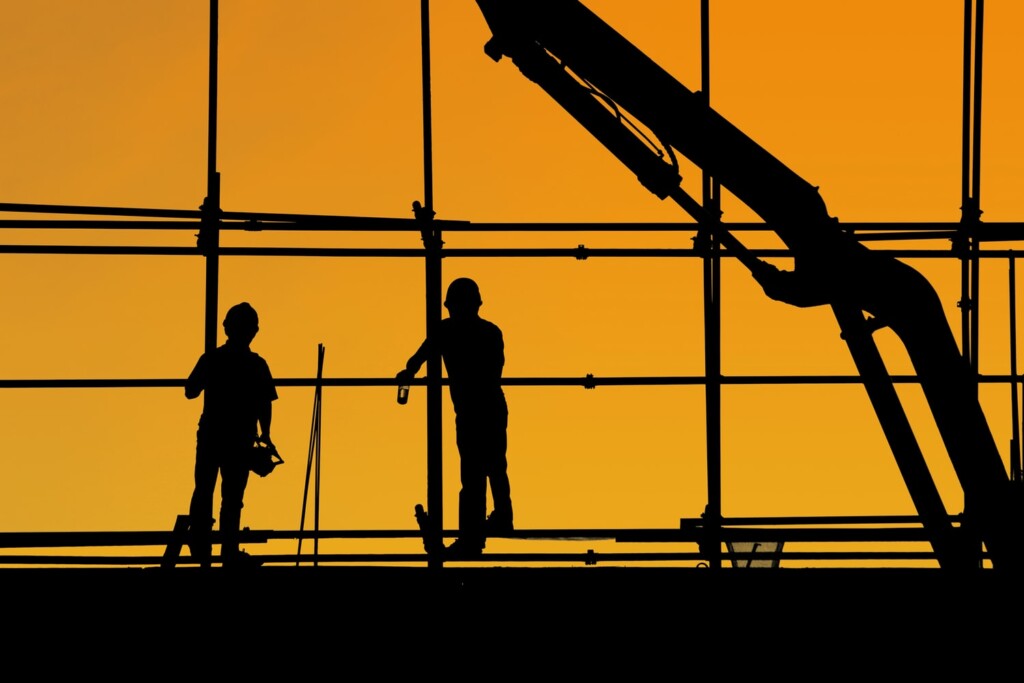
Will a builders’ risk policy respond to cover losses for site shutdown and delay as a result of COVID-19? The parties involved in construction projects may be asking themselves this very question. Insurance coverage could be triggered for losses incurred as a result of an outbreak of COVID-19 on site. Coverage will of course depend on the specific wording of the policy and any exclusions. Losses incurred because of a suspected case or expenses incurred to implement prophylactic measures intended to prevent the spread of COVID-19 are likely not covered. We consider the following issues in this article:
- What is covered by a builders’ risk policy?
- Are there exclusions that may remove coverage?
- What losses related to COVID-19 could be covered?
Certain construction sites in B.C. may have been temporarily shut down due to a confirmed case of COVID-19. Construction sites may also have been shut down at the direction of a governing authority because certain health and safety guidelines were not met. Further, construction projects may have suffered labour shortages as certain crews self-isolated due to symptoms or having come in contact with a COVID-19 positive case. In other jurisdictions, construction projects were halted all together during the initial phase of the COVID-19 pandemic pursuant to government orders in an effort to control transmission. No doubt, construction projects have experienced losses including extra expenses and delay in relation to COVID-19.
1. What is covered by a builders’ risk policy?
Builders’ risk policies cover damage or loss to property during the course of construction. Builders risk policies require that there be physical damage or loss to property before coverage under the policy is triggered. Physical damage is tangible damage to any property, such as a bent beam, or cracked concrete. Physical loss of property has been interpreted as including loss of use of property. In the context of the COVID-19, a key question for construction firms and insurance professionals is whether the loss of use of the construction site arising from COVID-19 constitutes physical damage or loss such that the insured parties can gain access to coverage. Each of the scenarios described above could arguably result in some form of loss of use of the construction site due to COVID-19.
There is no case law in Canada dealing with whether the infiltration of a virus causing delay or cessation of work or otherwise restricting or preventing access to a business or construction site will be interpreted as physical damage or loss. One 1992 decision from Prince Edward Island leaves that door open. In D.P. Murphy, Inc. v. Laurentian Casualty Co. of Canada, [1992] P.E.I.J. No. 70 (PEISC), the Supreme Court found that gas fumes in a building adjacent to a Tim Hortons, which caused the fire inspector to order the closure of the restaurant due to the risk of explosion, constituted direct physical loss under a commercial property policy.
In a very recent decision, MDS Inc. v. Factory Mutual Insurance Company (FM Global), 2020 ONSC 1924, the Ontario Superior Court of Justice found that loss of use of premises without actual tangible damage can constitute physical damage under an all-risks property insurance policy. Builders’ risk policies fall within this species of policies that are intended to provide broad coverage for “all risks” that may arise that are not otherwise excluded by specific provisions in the policy.
The premises at issue in MDS was a nuclear facility that underwent a shutdown to address safety concerns. In that case, MDS argued that the loss of use of the facility gave rise to physical damage under the all-risks policy. The Ontario Superior Court of Justice accepted this argument and relied on other Canadian cases where it was found that the presence of fumes from an oil spill constituted physical damage (Jessy’s Pizza v. Economical Mutual Insurance Co., 2008 NSSM 38). The Ontario Superior Court of Justice also relied on a United States decision in which the presence of vapours from gasoline were found to constitute physical loss (Western Fire Ins. Co. v. First Presbyterian Church, 437P.2d 705 (E.D. Mich.2010), aff’d 475 Fed Appx. 569 (6th Cir. 2012)). Adopting the reasoning from these decisions, and noting the general intent of all-risks insurance to provide broad coverage, the Superior Court of Justice found that the claim for loss of use of the nuclear facility triggered coverage under the all-risks policy.
Many have surmised that MDS has built the necessary bridge for construction parties to make COVID-19 related insurance claims. However, the application of MDS to COVID-19 related insurance coverage claims is uncertain. MDS dealt with an insurance claim arising from water damage, as opposed to something more tenuous like the infiltration of a virus. As well, the all-risk policy in question in MDS did not contain a definition of physical damage.
MDS is nonetheless a seminal decision which expands on what may be considered physical damage in the context of property insurance coverage in Canada. MDS is currently under appeal, but for now, this decision will likely facilitate parties claiming business interruption or delayed start up coverage, even though the decision does not specifically deal with COVID-19.
The reasoning set out in MDS may support a finding of coverage if a court will accept that the infiltration of COVID-19 constitutes property damage under a builders’ risk policy. On the other hand, if construction is hindered due to more onerous health and safety guidelines without any outbreak on site, this likely will not constitute “physical loss” or “property damage”.
2. Are there exclusions that may remove coverage?
If an outbreak of COVID-19 on site is found to constitute property damage, there may be exclusions in the policy that remove coverage. In particular, the policy may have a microorganism exclusion along the following lines:
This Policy does not insure any loss, damage, claim, cost, expense or other sum directly or indirectly arising out of or relating to: mold, mildew, fungus, spores or other microorganism of any type, nature, or description, including but not limited to any substance whose presence poses an actual or potential threat to human health.
The issue of whether a microorganism constitutes a virus has not been considered by our courts. The dictionary definition of microorganism includes microscopic organisms like a virus. Accordingly, the microorganism exclusion may exclude coverage for any losses arising from an outbreak of COVID-19. However, this exclusion is not consistent among all builders’ risk policies.
Other species of insurance policies may exclude loss or damage arising out of “contamination” and a virus could be categorized as a contaminant. Builders’ risk policies do not broadly exclude damage arising out of “contamination”. It is more common for specific types of contamination to be excluded under a builders’ risk policy, such as contamination arising as a result of radioactive matter or asbestos. It is therefore unlikely that any contamination exclusion in a builders’ risk policy would capture losses arising from an outbreak of COVID-19 on site.
3. What losses could be covered?
If the policy in issue extends coverage for COVID-19 related losses, specifically losses arising from an outbreak of COVID-19 on site, and the loss is not excluded by any other provision in the policy, then we turn to what losses could be covered. An outbreak of COVID-19 would not require any part of the project to be repaired or replaced. These are the typical costs covered by builders’ risk policies. Other costs, such as cleaning costs to reinstate the property for use, could be covered. Some policies specifically provide for the cost of removing contaminants from the immediate surface of the site. More significantly, builders’ risk polices may provide coverage for extra expenses, namely the amount by which the cost of completing the project exceeds the cost of construction had there not been an outbreak. Builders’ risk polices may also provide for delayed start up coverage, indemnifying the insured for delay to the scheduled completion date, including loss of gross profits.
4. Final Remarks
It is not clear if COVID-19 will be interpreted as giving rise to physical damage or loss under a builders’ risk policies. Typically, builders’ risk policies require that there be tangible physical damage or loss before coverage under the policy is triggered. There is, however, some case law to support that the loss of use of a construction site due to an outbreak of COVID-19 constitutes property damage. Notwithstanding this interpretation, coverage may be excluded by another term of the policy, such as an exclusion for losses arising from the presence of a microorganism. If the loss is covered and not excluded, the recoverable costs could be significant.
Of course, the specific coverages and exclusions vary from policy to policy. It is advisable to review the specific policy at issue with an insurance lawyer or other qualified insurance professional to confirm the scope of coverage. In light of the uncertainty surrounding this issue, it is advisable to put builders’ risk insurers on notice should a construction site suffer from an outbreak of COVID-19.



